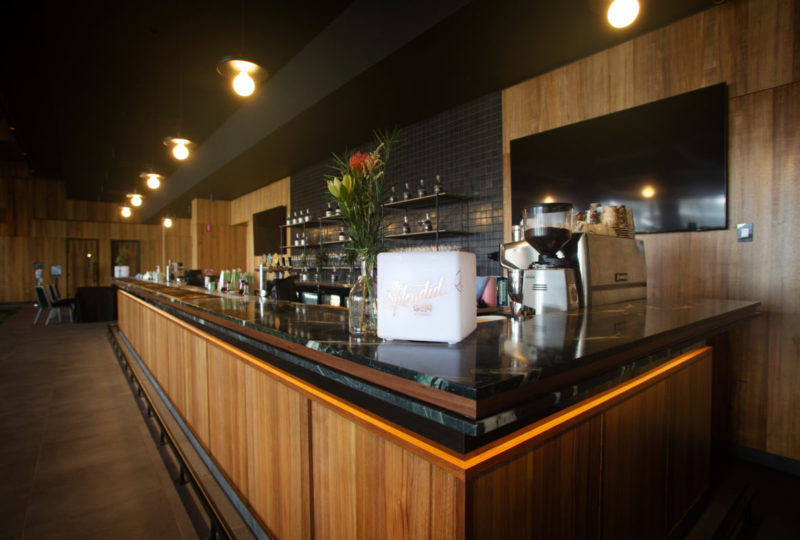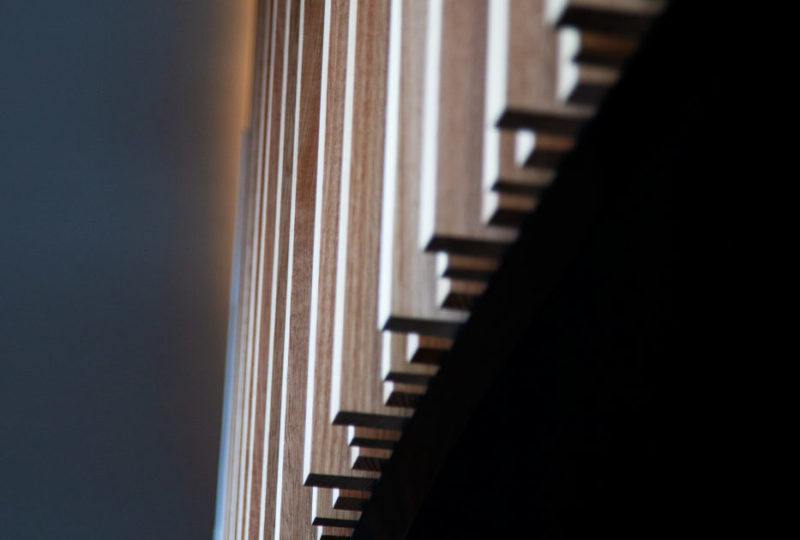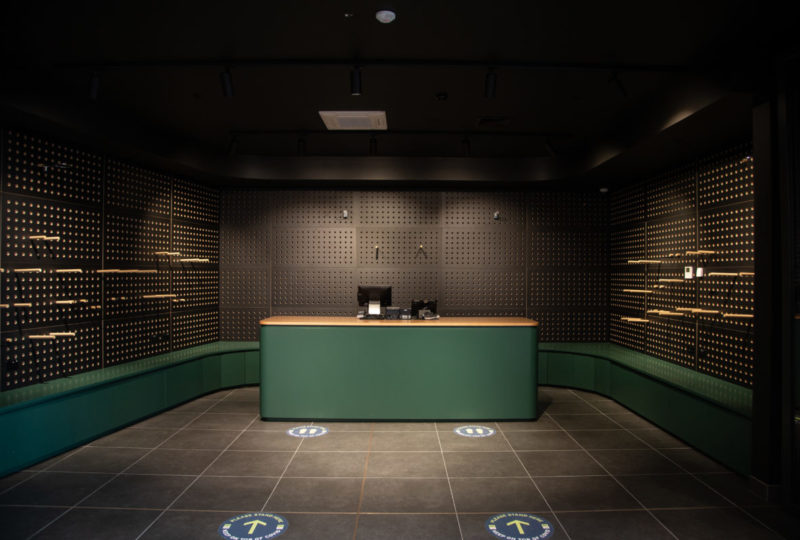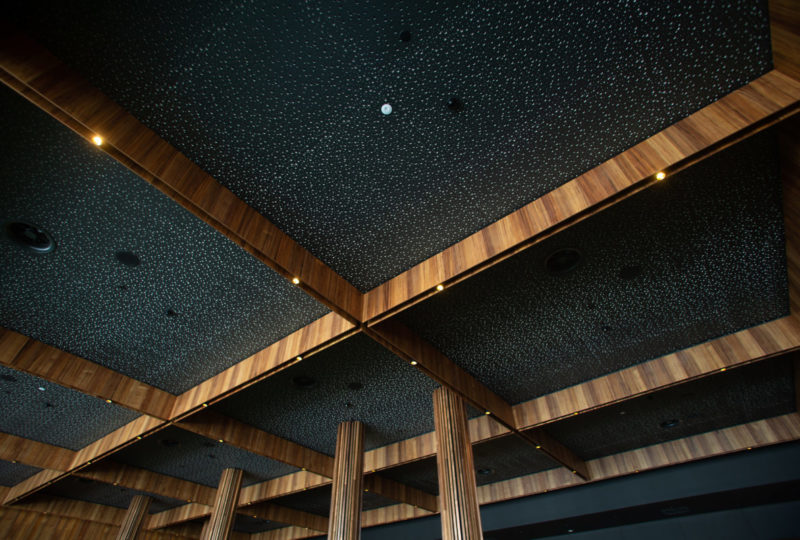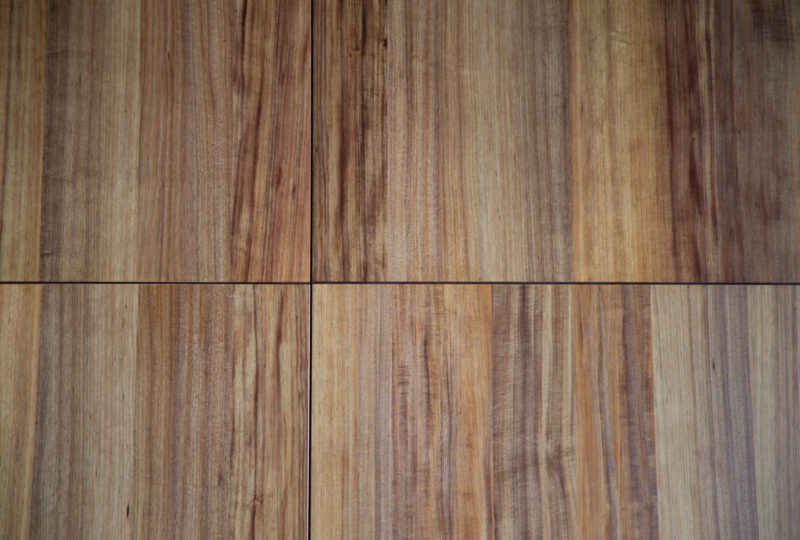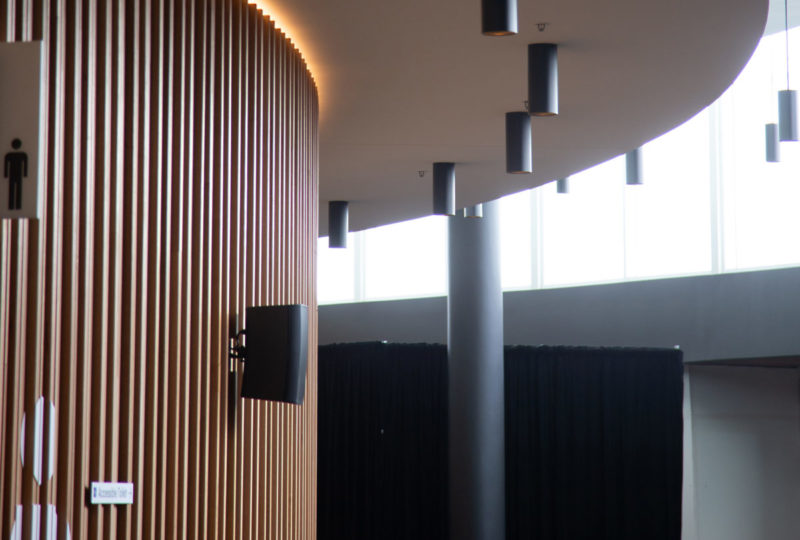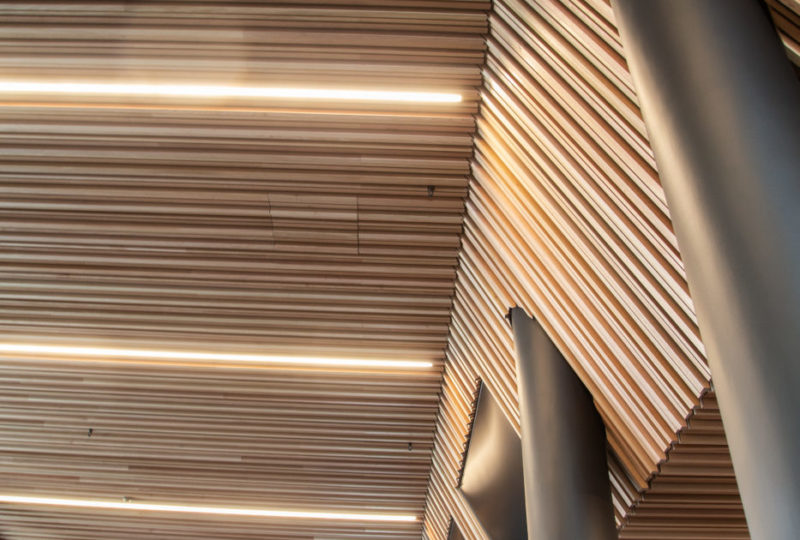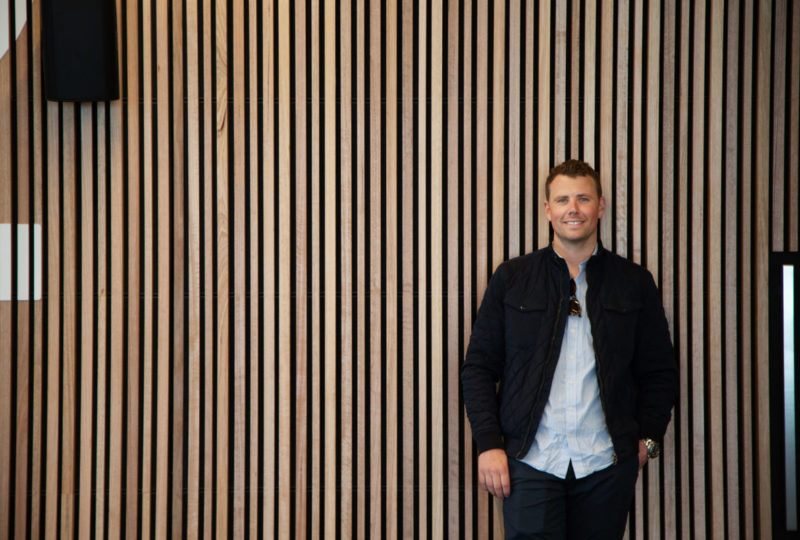Topic: This is Us
Transforming ‘the DEC’ into a world-class sports and entertainment arena
Article source: Tasmanian Timber
Tasmania’s Derwent Entertainment Centre, constructed in 1989, is Tasmania’s largest capacity indoor multi-purpose venue accommodating up to 8,800 people.
An agreement between the NBL and the Tasmanian Government has recently seen ‘the DEC’ refurbished into a world class arena that is now home to Tasmania’s first NBL team in 25 years.
The $66 million refurbishment has transformed ‘the DEC’ into a world class sports and entertainment facility, with the venue rebranded as MyState Bank Arena.
Tasmanian Timber spoke to Thomas Floyd from Philp Lighton Architects and Mark Millhouse from Voss about how they used Tasmanian timber to create the transformation.
The project brief was to redevelop the Derwent Entertainment Centre into a fit for purpose, distinctively Tasmanian, state-of-the-art basketball stadium, while also keeping the venue true to its origins as a multipurpose event space for Southern Tasmania. Philp Lighton Architects started from the fan’s perspective.
“We wanted to make the fan’s experience the best it could be on site, trying to make a warm and welcoming venue,” explains Floyd, “which instantly introduced timber into the design palette.”
“I think using natural products like Tasmanian timber, instead of painted plasterboard or cement sheet products is the best way of achieving a warm and welcoming space.”
Entering the facility, it’s clear that Philp Lighton Architects achieved their objective. Guests are greeted with a beautiful batten-style profiled solid board product in Tasmanian Oak that has been applied to the facilities vast curved walls and across the ceilings bringing the space ‘in’. The strip lighting and services have been incorporated into the batten system and an acoustic lining concealed behind it to ensure it is a nice space to be in. Tasmanian Oak is also repeated in the bar fronts and kiosk fronts with a profiled solid board to provide continuity to the aesthetic. The Tasmanian Oak, used by Philp Lighton as a way-finding strategy, draws the eye around the concourse.
“It breaks up the long linear spaces,” explains Floyd. “And it’s a good, flexible material for that space. It’s a hardwood, so its robust, and by using solid timber with an oil finish, it can take the knocks of a couple of thousand people going past, and it’s relatively easy to sand and refinish [if needed],” he says.
Voss Project Manager Mark Millhouse agrees. “When timber is used well it brings warmth and character to a building. The number of ways timber can be used is never ending – structural, decorative, or both at the same time, it’s incredibly versatile.
“Tasmanian timbers, like Tasmanian Oak and Blackwood, have a strength and hardness and resilience about them. They’re good products. Easy to work with, stable, which is important, quality that stands the test of time and they look good,” says Millhouse.
Floyd further explained that Timber’s ability to move, particularly in the concourse area where there are fluctuations in temperature, makes it a great choice in a commercial space. To finish the timber, Floyd explains that Philp Lighton chose an oil on the Tasmanian Oak to keep it as natural as possible.
Blackwood brings a hint of luxury to the corporate area
The corporate area is clearly differentiated as a high-end space. The walls are clad with Blackwood veneer, and the central columns are clad with Blackwood battens that accentuate the height of the 5.5-meter ceilings while making the columns almost disappear visually into the wall linings of the space. In the high-impact areas, solid pieces of Blackwood have been used on the corners of the bars, the reveals of doorways and the edges of doors.
“Blackwood does have a luxury vibe to it,” says Floyd, “which is something we wanted to promote for this corporate space, so it was the obvious choice.”
Philp Lighton architects specified mismatched veneer on 1200 by 2400 panels finished with a matt semi-gloss tupac. Floyd explains that by using mismatched veneer you don’t have to worry about the batching of timber when it comes to site, and the result looks like a much more natural product.
“Also from a sustainability perspective, mismatching the timber and not requiring full lengths and a consistent grain actually increases the utilisation of the product,” he says.
“We chose solid Blackwood battens for the columns because its robust and it matches the veneer panels, which makes the big 500 diameter concrete columns almost disappear into the wall linings of the space, which was something the client really wanted.”
To break up the big ceiling pace, Philp Lighton created a contemporary re-interpretation of a coffered ceiling out of Blackwood veneer which incorporated the lights and mechanical diffusers.
The coffers are on a metal frame with Blackboard veneer on a plywood substrate that’s edged all the way around to create the effect of a sharp edge.
“As architects, we’re always trying to solve problems and that’s what makes our solution worthwhile and meaningful. I think it is endless the creativity we can bring to a project.”
The Tasmanian supply chains
Due to the scale of the project, Philp Lighton thought the timber specification might stump a few suppliers, but were pleased to find that there were no supply chain issues at all.
“We are very happy with the Tasmanian supply chains. I’m very happy with the timber that has come to site.”
The Voss joiners who worked with the timber were equally pleased.
“Tasmanian suppliers are easy to work with, always follow up and a great sounding board to talk about solutions either before we install product or afterwards. They have local product and the knowledge about how that product is fit for our environment, because this is where the product grows. They also have the supply chain knowledge of what is available.”
Millhouse advises specifiers and builders to communicate early with the supply chain.
“We made sure we made the suppliers aware of our needs, and talked to them early, which means you can usually get around any short fall,” he says.
An exceptional result for the fans and the environment
Both Philp Lighton and Voss are very pleased with the result at MyState Bank Arena. Millhouse explains that from looking around the very dour building at the start, to walking around the impressive space now, is very enjoyable. “It’s a massive improvement that was much needed,” he said. “It’s great to have been a part of it.”
Floyd confirmed that the client, the Tasmanian government, is also pleased with the result.
“The feedback we’ve had from government is tremendous. I think for them to have invested a significant amount of money into this project and for it to be such a good result, exhibiting good quality Tasmanian timber, the project is a testament to what the Tasmanian Wood Encouragement Policy can achieve, given the right project to shine.”
Tasmania’s Wood Encouragement Policy ensures that sustainably sourced wood is fully considered, where feasible, in Tasmanian Government procurements.
“The sustainability of our buildings is in the community’s best interests, so locking up as much carbon as we can through government projects, is a great outcome,” says Floyd.
Wood Encouragement Policy aside, Floyd says Tasmanian timbers have been part of the Philp Lighton design palette for many years.
“Timber can age with the building. If it’s contemporary architecture and contemporary use of timber, it will all age nicely and be a good quality piece of architecture for many years to come. Then in the future, the solid timber can be re-purposed and re-interpreted in another setting or inside this building.
“This venue might not always be a sports stadium, and one day the timber could be taken off site and re imagined in another context.”
